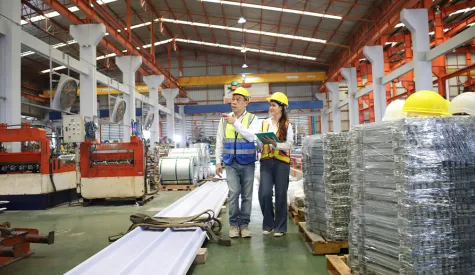Life in a Rapidly Changing Workplace Due to COVID-19

We were reminded last year of a famous quote by Heraclitus, the famed Greek philosopher who said, “the only constant in life is change”.
The impacts of COVID-19 and the devastation it brought in 2020, continue to be felt across the globe today and with it a continued acceleration of change in the workplaces and communities we work and live.
In the U.S., 2021 has brought with it a new Administration and already several themes have emerged. In addition to changes stemming from the Federal level, there are also changes happening at the state and employer level, as leaders grapple to adjust to the swift-moving currents.
In this post, we examine a few of the areas that have been impacted or are likely to be impacted as the year unfolds and the vaccine roll-out continues to advance.
First, an increased emphasis on improving workplace safety considering the ongoing COVID-19 pandemic. This includes recently released guidance, Protecting Workers: Guidance on Mitigating and Preventing Spread of COVID-19 in the Workplace aimed at educating both employers and employees outside of healthcare to “…help them identify risks of being exposed to and/or contracting COVID-19 at work and to help them determine appropriate control measures to implement.” In addition to providing guidance related to face-coverings, social distancing, and cleaning protocols, also included are requirements to record and report work-related cases on the employer OSHA Form 300 logs, subject to certain conditions being met.
Another focus area of the Administration has been on expanded testing, with plans to commit $50 billion to assist schools and communities to re-open and more quickly identify hot spots as they emerge. Some states, such as California have also provided additional mandates for employers related to testing requirements in the event of an outbreak in a worker facility. With increased testing will no doubt come challenges with tracking information at the employer level and burdens to report on those safety, operations, and HR professionals with responsibility in their organizations.
It is anticipated the Administration is likely to double the number of OSHA and MSHA inspectors over the course of the next 12-18 months in an effort to increase fieldwork and enforce the existing and new standards with more rigor than we saw under the previous administration. An expected impact here is the acceleration of EHS digitization efforts, such as the adoption of safety and compliance technology, as well as increased employee safety and compliance training.
One change that is also likely to advance will be the publication of a permanent infectious disease standard. This is something that was pursued years ago because of the H1N1 virus, but lost steam under the previous administration. Given the unknown duration of the COVID-19 pandemic, a mutating virus, and the unknown about the frequency of future respiratory viruses, it is very likely a permanent standard will be adopted.
As I’ve previously written, in addition to increasing compliance and regulatory changes, employers and employees will be challenged with the acceleration of the digital revolution which has changed business models, increased the need for an agile workforce with tools to support their upskilling and development, increased the need for tracking, compiling and reporting on various data to satisfy compliance, inform decisions and respond to challenges in the marketplace.
While we all hope for a “return to normal”, it is fast becoming clear that we are instead entering a “new reality” one in which the pace of change is increasing and which we must embrace to thrive as employers and employees.


